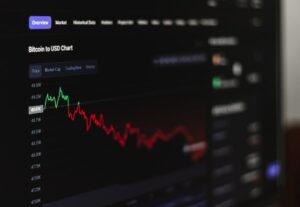Forex trading is a complex and dynamic market, where countless factors influence the prices of different currency pairs. One of the key factors that can significantly impact the market is the sentiment of traders. Forex sentiment analysis is a powerful tool that can help traders make better trading decisions by gauging the overall mood and sentiment of market participants.
Sentiment analysis involves analyzing and interpreting the emotions, opinions, and attitudes of traders towards a particular currency or the overall market. It aims to identify whether traders are bullish (optimistic) or bearish (pessimistic) about a currency pair, which can provide valuable insights into the future direction of prices.
There are several ways to conduct sentiment analysis in the forex market. One common method is to analyze social media platforms, news articles, and financial news websites to gather information about traders’ sentiments. By analyzing the tone and content of these sources, traders can get a sense of the prevailing sentiment in the market.
Another approach is to use sentiment indicators, which are tools that measure the sentiment of traders based on their trading activities. These indicators can provide quantitative data on the number of traders holding long or short positions, the volume of trades, and other relevant metrics. By tracking these indicators, traders can identify shifts in sentiment and adjust their trading strategies accordingly.
Forex sentiment analysis can be particularly useful in identifying potential market reversals. For example, if the majority of traders are bearish on a currency pair, it could indicate that prices are likely to decline in the near future. Conversely, if sentiment is overwhelmingly bullish, it might suggest that prices could rise.
However, it’s important to note that sentiment analysis is not a foolproof method for predicting market movements. It should be used in conjunction with other technical and fundamental analysis tools to make informed trading decisions. Sentiment analysis provides an additional layer of information that can help traders gain a better understanding of market dynamics.
To effectively use forex sentiment analysis, traders need to stay updated on the latest market news and developments. They should also be aware of major economic events and announcements that could impact market sentiment. By combining this information with sentiment analysis, traders can make more accurate predictions about future price movements.
There are several key benefits to using sentiment analysis in forex trading. Firstly, it can help traders avoid being caught on the wrong side of the market. By gauging the sentiment of other traders, they can identify potential market reversals and adjust their positions accordingly.
Secondly, sentiment analysis can help traders identify potential trading opportunities. For example, if sentiment is excessively bearish on a currency pair, it might present a buying opportunity for contrarian traders who believe that prices are likely to reverse.
Lastly, sentiment analysis can provide valuable insights into market psychology. Understanding the emotions and attitudes of other traders can help traders gain a better understanding of market dynamics and make more informed trading decisions.
In conclusion, forex sentiment analysis is a powerful tool that can help traders make better trading decisions. By gauging the overall mood and sentiment of market participants, traders can identify potential market reversals and trading opportunities. However, it’s important to use sentiment analysis in conjunction with other analysis tools and stay updated on the latest market news and developments. With the right approach, sentiment analysis can significantly enhance a trader’s ability to navigate the forex market.





